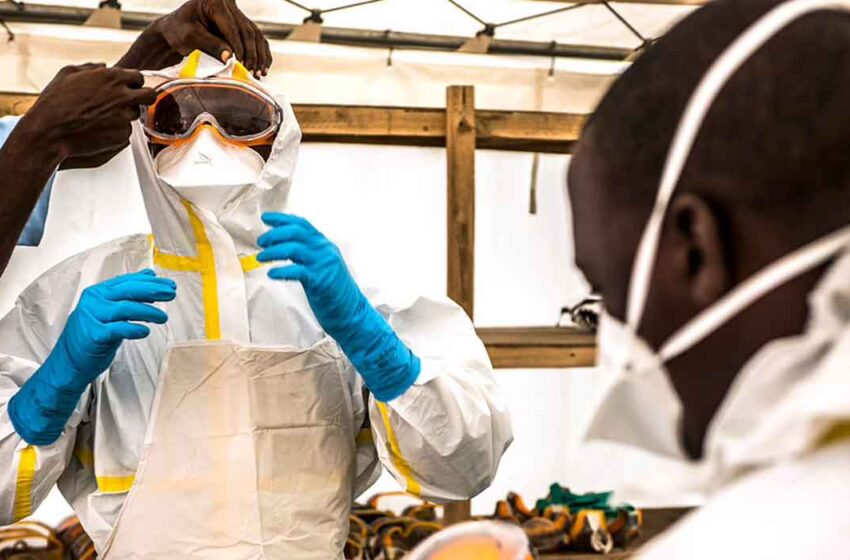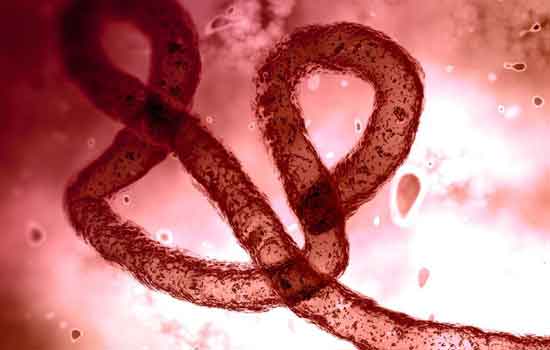Ebola Virus things you need to know

Ebola Virus

Until recently, we didn’t know about the Ebola virus. But in recent years, the virus has spread like air especially in Asian and African countries. The virus named Ebola simply causes the patient to go through a serious illness. If left untreated, acute illness leads to death. The origin of Ebola was observed in South Sedan and Congo. Later on, the virus spread near the river Ebola. This is how it was called the Ebola virus.
Ebola Virus History
The major Ebola virus symptoms were recognized in West Africa in 2014. The most complex and largest outbreak was the biggest until now. This leads to uncountable deaths and encouraged vaccination and prevention across the globe. The virus affected people in Guinea, Sierra, and Liberia.
Ebola Types
The Ebola virus is of three major types. The first one is Cueva virus, the second one is Marburgvirus and the last one is Ebolavirus. All of these belong to the Ebolavirus genus. There are 5 more viruses from the same gene. These are Reston, Tai Forest, Zaire, Bundibugyo and Sudan. Out of these five, Bundibugyo, Zaire and Sudan are prominent in Africa. The largest outbreak of 2014 was when Zaire ebolavirus spread in multiple numbers.
Ebola Virus Disease Transmission

The natural hosts of Ebola virus are Bats from Pteropodidae family. The human can get infections by having close contact with these viruses. The transmission also comes by close contact with blood, organs or body fluids of such animals. Some other hosts animals include monkeys, forest antelope, porcupines, fruit bats, gorillas, and even chimpanzees. The virus can spread from dead and alive animals of such categories.
When in a human body system, Ebola virus disease transmits to other humans as well. This occurs due to direct contact with the blood of a person who is carrying the virus. Infection can also spread if you come into contact with secretions or body fluids or materials the infected person has touched while bleeding. Every contamination by Ebola virus host can transmit this disease making it highly communicable.
Medical specialists often observe that they have been prone to this virus while treating patients with EVD or Ebola virus disease. The reason is the close contact of such professionals with patients during treatment and vaccination.
In several cases, direct contact even with the dead body of the infected person can transmit Ebola virus. The time for infection is as long as the virus is alive in the blood.
Ebola Facts and Points
- Ebola virus is also called Ebola hemorrhagic fever as it affects our blood cells
- The virus can even be spread from dead bodies of animals or humans
- It originates from a wild animal and then spread more from human to another human
- As far as facts say, the fatality rate for Ebola virus disease is 50%
- First outbreaks were in Central Africa in tropical rainforests.
- To control the outbreaks, you need to have community engagement. Other factors contributing to prevention include a pack of intervention and case management. Some other factors are control practices, contact tracing, great medical services, and safe burials.
- Some of the early care includes survival and rehydration. As of now, there is no official treatment for Ebola virus disease. However various types of therapies including immunological and drugs with blood are still under consideration for development.
Ebola Virus Symptoms
The time from the virus infection till the onset of symptoms in case of Ebola ranges from 2 to 21 days. This is also called the incubation period in medical terminology. Until he or she develops symptoms, humans are not infectious. Few initial symptoms are sudden muscle pain, fatigue, sore throat, and headache.
Some other symptoms are diarrhea, rash, impaired kidney, liver function, vomiting, and internal or external bleeding. During diagnosis, there is a sudden elevation in platelet counts and white blood cells.
Diagnosing
Clinically, it can be difficult to distinguish Ebola virus disease. It can be tough to separate or identify it aside from other viral diseases such as typhoid, meningitis or malaria. To confirm the symptoms, one needs to take part in several diagnosis methods such as:
- Serum neutralization test
- (RT-PCR) reverse transcriptase polymerase chain reaction assay
- antigen detection tests
- antibody-capture enzyme-linked immunosorbent assay
- virus isolation therapy
- electron microscopy
When selecting the test for diagnosis, you should give careful consideration to which one you need to take. For this, you should take into account the technical specifications, the disease prevalence, and incidence. You should also consider medical and social implications for the results. In the case of the Ebola virus, independent and international evaluation should also be done on a priority basis.
Besides these tests, the WHO also recommends various other diagnoses tests like:
- Automated or semi-automated nucleic acid tests. This is usually a part of routine diagnosis management
- In remote settings, rapid antigen test can be done this is also helpful where NATs are not available readily. Such tests, though effective are not brought to use for screening purposes. These are used for surveillance activities as such.
WHO also recommends various specimens like?
- Oral fluid specimen from deceased patients. Lab technicians collect it when blood collection is not possible. The specimen is stored in a universal transport medium.
- Technicians collect blood as a whole blood present in EDTA or ethylene diamine tetra acetic acid. This is done with live patients having Ebola virus symptoms.
These sample collection process might seem beneficial for patients. However, they pose a hazardous risk at the laboratory level. Experts say that all testing and samples should be under sterile or biologically contaminated conditions. Lab technicians and medical experts pack these specimens and samples with triple layer packing for transportation or storage purposes.
Does Ebola Spreads Sexually
Since Ebola comes in the category of viral infections, there is a debate on whether it is spread sexually or not. As of now, research is still going on. There are several recommendations as far as sexual transmission of Ebola virus disease concerns. The Ebola survivors and their partners should avail counseling for safe sexual practices. This is done until lab reports confirm semen as negative two times. Condoms are also a good way to avoid the virus and stay safe all the time. Some male survivors of Ebola can go through semen testing. The date should be at 3 months after disease onset. If positive, he should get the diagnosis and treatment until there is a negative result by RT-PCR examination. There should be an interval of one week between examinations.
The positive aspect of looking at
t the brighter side of the things, when tested negative, one can resume normal sexual activities without a threat of transmission. There are analysis and research going on and WHO recommends that that male survivors should always practice safe intercourse. This is to be done for at least 12 months from the onset of symptoms. This is until the semen appears negative in test results. Also, survivors should practice good personal hygiene. This involves washing hands with soap after physical contact with the semen. The same applies to the event of masturbation. Condoms are also a good choice to do safe sex. One should dispose of condoms. This prevents harmful contact with hazardous seminal fluids. In the end, remember that everyone should treat partners and family members of the Ebola virus with dignity, respected and compassion.
Keep in touch healthnwellness for more updates.



